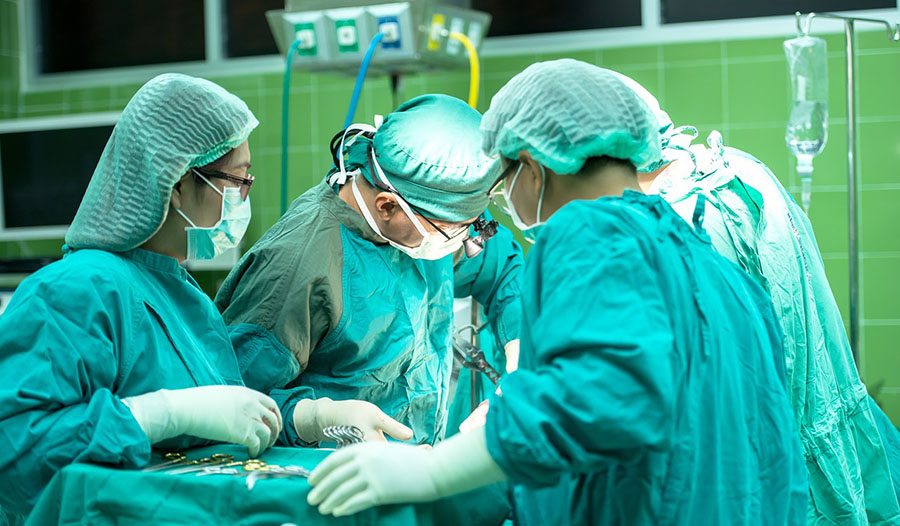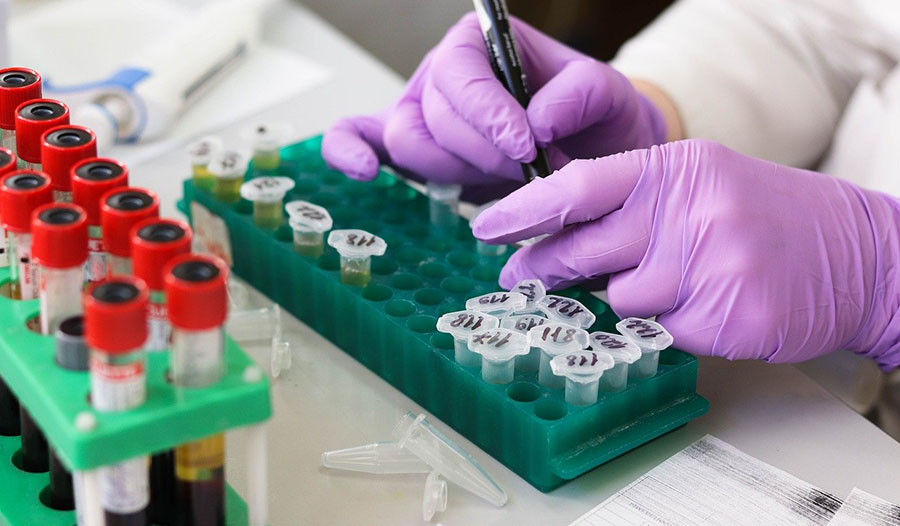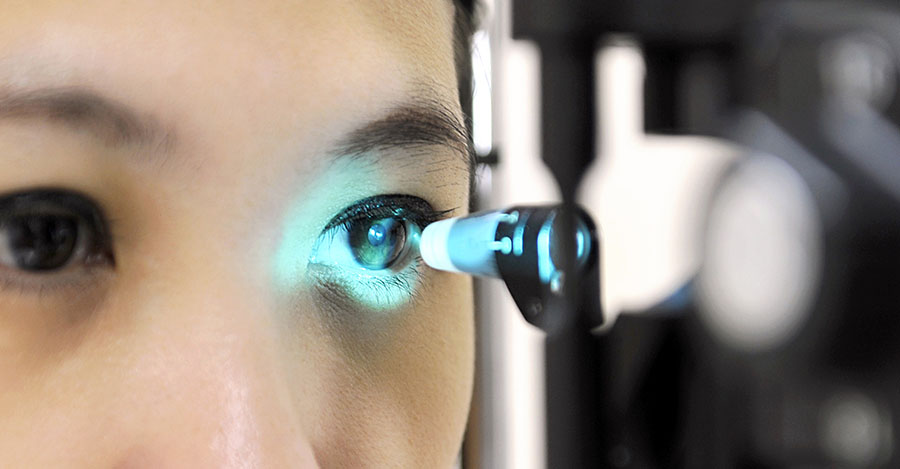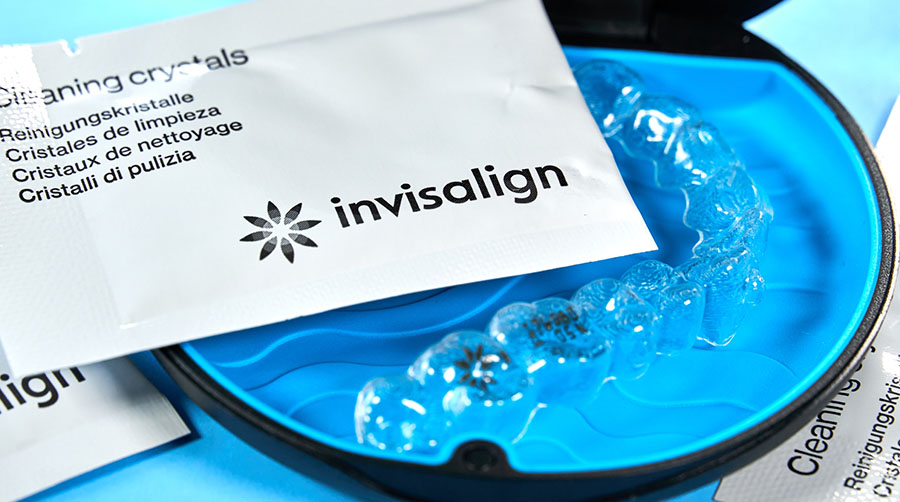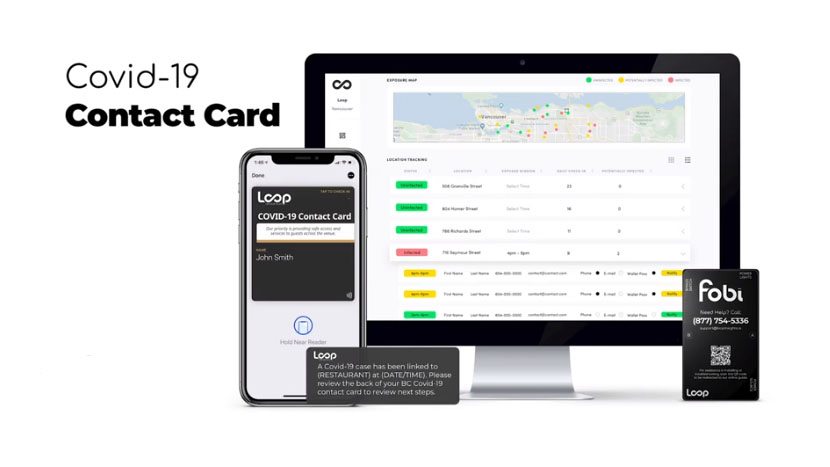The Life Sciences Report: You focus on the smallest of public companies, ranging from low double-digit market caps of about $10 million ($10M) to $70–80M. Clearly, that segment of the investing universe is where the most upside potential is, because it's easy to move these shares with capital. Of course, the risk is proportional to these potential gains. How does your due diligence begin on these stocks, where there is so little coverage and prior exposure?
Brian Marckx: There is enormous potential upside in the stocks of many of the companies that I cover but also tremendous risk, given that many of them have yet-to-be-proven technologies or products, and may be burning a significant amount of cash. Oftentimes, they are companies with somewhat shaky balance sheets, and the shares may be thinly traded. All of that makes these types of investments inherently risky.
My due diligence typically starts with a general overview of the company. I'll have a conversation with management, which can answer my initial questions and provide pretty good background on the company's products, strategy, industry, competition, etc.
After my initial conversation with management, I talk to people in the industry, who typically offer information that mirrors what management provided, but with an outside perspective. I'll also look at publicly available information. I typically generate a number of questions and then have another conversation with management, which is one of the best sources for answers. The process can be lengthy and sometimes tedious, but it's always insightful and informative. Given that these companies are often working on novel products and are not household names, the process is necessary to understanding a company's place in the industry.
TLSR: Analysts, like scientists, have to be skeptical, but they shouldn't be cynical. Don't you have to begin due diligence with the question of how a company with just an idea, a small amount of intellectual property (IP) and a handful of employees will ultimately compete with big pharmas, big biopharmas or big medtechs?
BM: Skepticism is a necessity for analyzing and investing in stocks. That's particularly true in the small- and micro-cap space, where there is typically less information about the companies. Because the market caps are so small, there is also, unfortunately, more potential for price manipulation and even fraudulent behavior.
Often the first question I have to answer is, "How will this tiny company compete with the goliaths—or any other company in the industry?" Getting comfortable with the answer involves understanding the target market and the other companies and products competing in that market. Sometimes there aren't any other products on the market. In those cases, particularly for companies with novel products that may have wide-ranging applications or target markets that are relatively large, the upside of the stock can look particularly attractive.
"Skepticism is a necessity for analyzing and investing in stocks."
Other times, competing products are already on the market. In those cases, determining how competitive a company or its product may be is about understanding the advantages one product may have over the others. The product may be more efficacious or have a lower incidence of safety issues. Maybe it has a lower cost or a less frequent treatment burden, among other possible advantages. If a small company with a novel product has to compete with an already dominant product on the market, it had better have some obvious advantages.
TLSR: Let's talk about some companies. In the first interview I did with you this past summer, we talked about a few companies I'd like to follow up on. You discussed Verisante Technology Inc. (VRS:TSX.V), which makes a noninvasive device for detection of skin cancer called the Aura.
BM: Verisante has a CE mark, meaning that it is approved and can be marketed in Europe, and in October 2011 it got a medical device license from Health Canada to market the Aura in that country. The device is for sale in both Europe and Canada, and also in Australia. Distribution is lined up in Canada and Europe, including in Germany. U.S. approval probably will not happen in the near term. Approval will require a U.S. clinical trial, probably through a premarket approval (PMA) pathway. That's down the road, but it is certainly a goal.
The Aura technology uses what's called Raman spectroscopy, named after C.V. Raman, who won the Nobel Prize for physics in 1930. A laser is used to determine the biochemical composition of the tissue, which is then compared to a database. The technology has racked up a number of awards in the last few years. The beauty of the skin cancer market is that, as far as detection goes with a device, the market is virtually untapped. Verisante is one of two companies with a marketed device for skin cancer detection.
TLSR: Brian, address that other company and explain any differences between the two, please.
BM: The company is Mela Sciences Inc. (MELA:NASDAQ). Verisante's device looks very competitive relative to Mela's MelaFind device. There have not been any head-to-head studies comparing the two, but based on data from both devices, it looks like Verisante's Aura is superior in accuracy and is certainly much faster, which is important if clinicians want to be able to do full body scans. Verisante's technology is also potentially applicable in other cancers, such as lung and oral cancers, which are derivative applications that Verisante is looking at.
TLSR: It sounds like you're not modeling any U.S. revenues for Verisante's Aura system. You implied that it could be years before regulatory approval in the U.S., and the company has not begun clinical trials yet. Is this the same technology as in the already approved MelaFind system?
BM: It is not the same technology; it's different.
TLSR: And that's why the FDA would require a PMA rather than a 510(k) clearance (premarket notification), where the device would be treated as substantially equivalent to a product already on the market.
BM: At this point it's still not clear exactly how FDA will treat the Aura in terms of a regulatory pathway, but if the agency does not characterize it as a substantially equivalent device to MelaFind, then, yes, Verisante will likely have to pursue FDA approval via PMA.
TLSR: A PMA means clinical trials that would take a lot of time, and the company would have to run at least two. With Verisante's $18M market cap, is it realistic to expect approval of the Aura system in the U.S.?
BM: It is realistic to assume that the Aura can be approved in the U.S., yes. Mela's device was approved with less-than-compelling clinical data, and U.S. approval of MelaFind was a surprise for some people, analysts included. The hurdle has been set fairly low based on the MelaFind approval, which may figure into an approval decision.
TLSR: Your target price for Verisante is $2, with a recent share price of $0.27/share. That is huge implied upside. What is the timeframe on that?
BM: A year.
TLSR: I understand, from reading your research report, that the MelaFind rollout has been below expectations. Is the product so difficult to use that dermatologists don't want to bother with it? Of course, my question goes to whether or not Aura would find the same level of resistance in the marketplace.
BM: I don't know that the jury is back on what the issue is with MelaFind. My suspicion is that a few different things are coming into play. One is that it's a new technology, a different way for dermatologists to screen for skin cancer. Just the fact that it is novel is somewhat of a headwind.
Another thing is that there is no reimbursement for the device, so the patient has to pay out of pocket. Everyone suspected that, at least at the beginning of the rollout, the lack of reimbursement would hinder uptake and utilization. But from Mela's comments, it seems that at least some patients are willing to pay. Cost may not be a hindrance over the long term.
Another factor is that Mela's device may not have the utility and functionality that dermatologists want. It may not be as fast as they need, and they may find it difficult to do full body scans. It is also only a screen for melanoma, and not the other skin cancers.
TLSR: The Aura device can also screen for basal cell and squamous cell carcinoma, in addition to melanoma?
BM: That's right. There is a real opportunity in the U.S. for the Aura. It has significant advantages versus MelaFind.
TLSR: I have BioLife Solutions Inc. (BLFS:OTCBB) on my list of companies you follow. Can you talk about it?
BM: BioLife makes biopreservation media for cells, tissues and organs. These solutions are used to maintain the viability of biological material during storage and transportation. Today, most of the biopreservation market is dominated by what are called "home brews," or in-house solutions. BioLife has its own proprietary biopreservation media, and it has been doing very well. Revenue has been very strong over the last few quarters. In fact, BioLife set revenue records in 11 of the last 12 quarters, and the stock is up about 100% in the last six months, even with a very significant pullback during the month of November.
BioLife also has a contract manufacturing business, which has been helping with revenue and cash flow. Its media products are being used in several clinical trials to preserve tissues and cells. The hope is that, when and if the products in trials get FDA approval and are commercialized, they could be big winners for BioLife Solutions. This company clearly has a lot of traction.
TLSR: Are the BioLife media products also used to preserve organs harvested for donation and transplantation?
BM: They can be, yes.
TLSR: Brian, I'm thinking the size of this market must be limited. How large is it?
BM: One source estimates the market at roughly $200M today, with expectations it will grow to about $500M by 2018. That's the biopreservation media market as a whole.
TLSR: Are there competitors beyond the home brews? Are other companies doing this?
BM: The main competitors right now are the home brews, and that's how BioLife gauges the competitiveness of its product. A relatively large market is there for the taking.
TLSR: If there's one thing you want to do in medicine—and especially in research—it's to standardize your formulations, and a branded product would be a great way to do this.
BM: That's right, absolutely.
TLSR: Can you speak to CytoSorbents Corporation (CTSO:OTCBB), which is also in your coverage?
BM: The company is led by a very smart and capable physician, Phillip Chan. CytoSorbents has a blood purification filter, CytoSorb, that removes cytokines and other toxic substances from the blood. This device is installed in-line with a dialysis machine, but with the dialysis filter removed. The company's patented polymer beads, which capture unwanted toxic substances in the blood, are inside the unit's cartridge. The target market for the device is the critically ill patient population, particularly those who have sepsis, which is a very difficult problem to treat and often results in death. It's also targeted for trauma patients, patients in respiratory distress and even can be used in surgical applications.
In a clinical study in Europe, the device was shown to be safe, and significantly reduced key cytokines. It's CE-marked and being commercialized in Europe. The rollout is not a shotgun approach; it is somewhat slow but seems to be effective, and the company has already booked commercial sales. The product is in several investigator-led studies right now, which CytoSorbents is promoting with clinical trial data to increase clinical experience and help market the product. The company is saying, "Let's show the clinical community that this works." On its last update call, management sounded optimistic that growth and the relatively successful rollout to date will continue.
TLSR: My understanding is that the idea behind CytoSorbents' hemoperfusion product is to remove cytokines from the plasma to reduce inflammation so that doctors can deal with an acute problem without the patient dying. Is that accurate?
BM: You hit it on the head; that's exactly what it is.
TLSR: Brian, I'm noting CytoSorbents, with a $29M market cap, has been infused with nondilutive capital in the form of grants.
BM: Yes, the company has received several government-sponsored grants, including a Defense Advanced Research Projects Agency (DARPA) grant that is worth almost $4M. That grant is for developing a dialysis-like device that would treat sepsis by removing cytokines and pathogen-derived toxins. The company is now in the second year of the five-year contract with DARPA. The U.S. Army awarded a $1.2M contract for treating trauma and burns, and the U.S. Air Force has funded a 30-patient pilot study in trauma.
TLSR: Is there a competitor in this space?
BM: There isn't—not specifically for critically ill patients, CytoSorbents' target population. There are at least two other devices on the market that have an application in sepsis, but that is not necessarily the company's only target market. The product would be essentially brand new. If CytoSorb works, its market opportunities are enormous.
TLSR: Pick another name.
BM: Let's go to Zecotek Photonics Inc. (ZMS:TSX.V; W1I:FSE; ZMSPF:OTCPK). This is a very unique small company, which is typical in my coverage universe. It was founded by theoretical physicist Faouzi Zerrouk, who is also the company's chairman and CEO.
Zecotek owns all the key elements for positron emission tomography (PET) scanners. Those key elements are the scintillation crystals, the photodetector and the acquisition board. At the forefront are the scintillation crystals, which are used as the light source in PET scanners. The performance of the crystals is directly related to the performance of the scanner.
"If a small company with a novel product has to compete with an already dominant product on the market, it had better have some obvious advantages."
Higher performing crystals are a big deal for PET scanners, and Zecotek's crystals look to be the highest performing crystals on the market. The competitive landscape includes only a handful of other manufacturers. Zecotek already has a distribution agreement with Hamamatsu Photonics K.K. (HPHTF:OTCPK), which is the world's largest supplier of optoelectronics to PET manufacturers. It already has orders worth $2M from Hamamatsu. The company's crystals could be a really big deal.
Another intriguing aspect of Zecotek is its lawsuit against Saint-Gobain S.A. (SGO:EN Paris) and Philips Healthcare/Koninklijke Philips N.V. (PHG:NYSE) for patent infringement. The company claims that Saint-Gobain, which is also a crystals supplier, infringed on one of Zecotek's crystals-related patents. Philips is named in the lawsuit because it used these specific Saint-Gobain crystals in its PET scanners. The lawsuit is currently in the courts. It could take some time for a decision to be handed down, or for a potential settlement agreement. But based on similar precedent cases, it appears Zecotek has a strong case and, depending on the outcome, the company could see a sizable award.
TLSR: Is there any visibility on the timeframe for this lawsuit against Saint-Gobain and Philips?
BM: Part of my due diligence was talking to a patent lawyer for guidance in what to expect. He could only provide general information, but the thinking is this could take 12 months or more. It's possible that a decision won't take that long, and it's also possible there will be a settlement. In the PET scanner space, there is reason to be friendly because there are so few parties involved in the space. The different parties need to work together. It would not be unreasonable to see a settlement, but that's complete speculation on my part at this point.
TLSR: Another one?
BM: Aethlon Medical Inc. (AEMD:OTCQB) is similar to CytoSorbents in that it has an extracorporeal blood filtration device, the Hemopurifier, which also hooks up to a standard dialysis machine. There are several differences, but the big distinction is that the initial target market for Aethlon's device is the hepatitis C virus (HCV). The device helps rid the blood of the virus and could be used with standard HCV drugs on the market now.
Aethlon's longer-term market may also include cancer, whereby the Hemopurifier would target the collection of exosomes, which are small particles released from cells that act as messengers and have been shown to possibly facilitate tumor progression.
But the initial target is those patients with end-stage renal disease, who are very sick and have to be hooked up to a dialysis machine anyway. The expanded market includes people who still have functioning livers but have contracted the virus and either failed or relapsed with standard-of-care drug therapy. The device is not commercialized yet. It's in some small studies, and is being used in studies in India.
The most recent exciting news for Aethlon is that it has FDA approval to run a small, U.S.-based pilot study treating 10 patients with end-stage renal disease. The study is focused on safety, but it's also expected to provide some insight into efficacy and how much of the virus is captured. That study is supposed to start in Q1/14. It should wrap up in relatively short order.
Also, Aethlon, like CytoSorbents, has been very active under DARPA grants. It is part of a DARPA sepsis grant program, and has been awarded three one-year contracts under this grant, with the potential to be awarded two more one-year contracts, for a total of five years. The first three contracts were for a total of approximately $5M; the fourth- and fifth-year contracts, if awarded, would be worth another $1.8M. For a small company like Aethlon Medical, with a $26M market cap, these DARPA contracts are a relatively big deal. The DARPA awards are important not only to fund research and development, but also to provide credibility to the technology. Kudos to Aethlon Medical.
TLSR: Brian, you have Aethlon rated Neutral with a target price of $0.20. Recently, the stock price was about $0.14. What would make you move in a more positive direction with your rating?
BM: Again, I think Aethlon has done a lot of good things. I like management, especially its tenacity. But since I've covered the company, it has had issues with its balance sheet. I could get a bit more comfortable if the balance sheet were strengthened, which would be positive. The company has done a good job of addressing that issue, but it still has a ways to go.
Aethlon also has some debt that is not performing, but it has been able to convert some of that debt to equity. The company has been able to raise capital, which I see as positive. It has interested investors. If I could see more strength in the balance sheet and continued progress elsewhere, that could be a potential catalyst to upgrade.
Aethlon also recently launched a subsidiary called Exosome Sciences Inc., which will be focused on how tumor-secreted exosomes may facilitate the progression of cancer. Depending on how Exosome Sciences progresses, it could also factor into my rating.
TLSR: What about the 10-patient pilot study? Would that be a catalyst for turning these shares upward, or turning your rating upward?
BM: George, when Aethlon applied for the U.S. study, there was a real question mark as to whether it was going to get FDA approval to run the study. When FDA gave the study the green light, I saw that as a derisking moment. I increased my price target at that point, but left the recommendation at Neutral. If the pilot study comes out positive, certainly that would add to my confidence, even if it didn't necessarily trigger an upgrade.
TLSR: Another name?
BM: FluoroPharma Medical Inc. (FPMI:OTCQB) makes nuclear imaging agents for cardiac applications. These radiopharmaceutical agents are injected in the bloodstreams of patients getting PET scans to help provide better images.
The generic imaging agents now on the market are not intended specifically for the heart. FluoroPharma's imaging agents are specifically for cardiac applications and also specifically for PET scanning procedures. PET has been used generally in oncology applications, but is now being used for more cardiac purposes.
The broad target market is heart disease, which is the No. 1 killer in the U.S. It's become a real epidemic, and a huge opportunity. FluoroPharma's imaging agents will be used in several applications, including during myocardial perfusion imaging (MPI), used to evaluate patients with heart disease that are in such tough shape that they can't undergo a standard heart stress test. Imaging is also used to identify the presence of vulnerable plaques, which could potentially rupture and put a person at risk of heart attack or stroke.
FluoroPharma has three agents in development, two of which are in phase 2 studies now. The images from the initial studies have shown very high-quality results—significantly better than the comparator.
TLSR: What about milestones or catalysts? When could we see these?
BM: The company expects to have additional data from these studies in the next few quarters. That could give us insight into how competitive these tracers are. Phase 3 trials potentially could start in 2015. We're most likely looking at a commercial launch three or four years out. But the market is huge for this.
TLSR: I know that most cardiac studies are done with single-photon emission computed tomography (SPECT). Are you looking to see movement away from SPECT to PET?
BM: Yes, there is a shift going on from SPECT to PET. SPECT has, for the longest time, been the standard of choice, but changes in reimbursement and lower-cost PET scanners are making PET a better choice. PET scans also provide better pictures. For FluoroPharma, this is a real opportunity. There is nothing on the market that would aggressively compete with its agents right now.
TLSR: What about another name?
BM: Interleukin Genetics Inc. (ILIU:OTCQB) is also a very small company. It makes genetic tests focused on personal health. The majority of its revenue to date has been from its genetic test for weight management. Based on a person's genetic makeup, the test helps an individual choose which diet will be most effective. This test was a real revenue driver, and got a lot of mainstream media attention over the last few years. But that attention dried up perhaps 12 months ago.
TLSR: What's the driver now?
BM. Again, Interleukin has a test that, based on a person's genetic makeup, helps determine how susceptible that person might be to periodontal disease. The test was used in a large study done by the University of Michigan, and is currently in the early stages of commercialization. It will launch in January 2014. The company has secured partial insurance reimbursement through Renaissance Health Services. From that standpoint, it's a real breakthrough.
TLSR: Your target price on Interleukin Genetics is $1.10/share, and its recent price was about $0.35/share—a very nice implied upside. Did you have one more name that you could talk about?
BM: Yes. Cryoport Inc. (CYRX:OTCBB) provides cryogenic shipping for biological materials, typically for pharmaceutical and biotech companies. The company competes against dry ice in a cooler, which is how most biological material is shipped these days. There are issues of temperature excursions with dry ice and, for long-distance travel, dry ice must be replenished. The CryoPort Express is a liquid nitrogen container; it doesn't have the temperature excursion problem and it does not have to be replenished for a long trip, which makes it ideal for international shipping.
TLSR: Are there no other liquid nitrogen competitors for this purpose?
BM: Other liquid nitrogen containers on the market may be considered somewhat competitive relative to holding time, but no other company out there has both the container and the logistics service that Cryoport has, with its Web-based billing and tracking system. Cryoport has a reliable and low-cost solution for cold-chain shipping. It is, essentially, a one-stop shop.
The company has an agreement with FedEx Corp. (FDX:NYSE) to handle all cryogenic shipping needs that will fit in its particular containers, and is listed on FedEx's website. It has agreements with several other freight forwarders and biotech-related companies. In fact, it recently signed an agreement with Pfizer Inc. (PFE:NYSE) to handle the logistics for shipping one of its key animal vaccines. This could be a real game changer in cryogenic shipping.
TLSR: It seems like the Pfizer agreement for its animal vaccine is a real validation of this service. Is Cryoport actively talking about that?
BM: It is, absolutely. Having companies like FedEx and Pfizer interested in the service is a real vote of confidence, and adds real credibility to what Cryoport does—they wouldn't be interested in Cryoport if it didn't have a quality service. Cryoport's container was mentioned in a 60 Minutes piece about stem cells, just briefly, as the most reliable cryogenic shipping company. That was about two years ago.
TLSR: Thank you, Brian. I enjoyed it very much.
BM: Thank you too.
Brian Marckx is the senior medical device analyst with Zacks Investment Research, and has covered the medical device, pharmaceutical and biotechnology industries since joining Zacks in 2007. Prior to joining Zacks, Marckx worked as a high-yield bond analyst on Wachovia Securities' institutional trading desks, where he specialized in the healthcare and industrials industries. Before that he was an analyst in corporate finance at First Union National Bank. Markx has been quoted in numerous publications, including The Wall Street Journal, Barron's, Bloomberg-Businessweek and Kiplinger. His work has also been cited in various market studies and working papers, including those from Massachusetts Institute of Technology, Deloitte & Touche, and Pharmaceutical Manufacturing. He graduated with a bachelor's degree in finance from St. John Fisher College and received his master's degree in business administration from Wake Forest University. He is also holds a Chartered Financial Analyst designation.
Want to read more Life Sciences Report interviews like this? Sign up for our free e-newsletter, and you'll learn when new articles have been published. To see a list of recent interviews with industry analysts and commentators, visit our Streetwise Interviews page.
DISCLOSURE:
1) George S. Mack conducted this interview for The Life Sciences Report and provides services to The Life Sciences Report as an independent contractor. He or his family own shares of the following companies mentioned in this interview: None.
2) The following companies mentioned in the interview are sponsors of The Life Sciences Report: BioLife Solutions Inc., Verisante Technology Inc. Streetwise Reports does not accept stock in exchange for its services or as sponsorship payment.
3) Brian Marckx: I or my family own shares of the following companies mentioned in this interview: None. I personally am or my family is paid by the following companies mentioned in this interview: None. My company has a financial relationship with the following companies mentioned in this interview: Verisante Technology Inc., BioLife Solutions Inc., CytoSorbents Corp., Zecotek Photonics Inc., Aethlon Medical Inc., FluoroPharma Medical Inc., Interleukin Genetics Inc., Cryoport Inc. I was not paid by Streetwise Reports for participating in this interview. Comments and opinions expressed are my own comments and opinions. I had the opportunity to review the interview for accuracy as of the date of the interview and am responsible for the content of the interview.
4) Interviews are edited for clarity. Streetwise Reports does not make editorial comments or change experts' statements without their consent.
5) The interview does not constitute investment advice. Each reader is encouraged to consult with his or her individual financial professional and any action a reader takes as a result of information presented here is his or her own responsibility. By opening this page, each reader accepts and agrees to Streetwise Reports' terms of use and full legal disclaimer.
6) From time to time, Streetwise Reports LLC and its directors, officers, employees or members of their families, as well as persons interviewed for articles and interviews on the site, may have a long or short position in securities mentioned and may make purchases and/or sales of those securities in the open market or otherwise.




